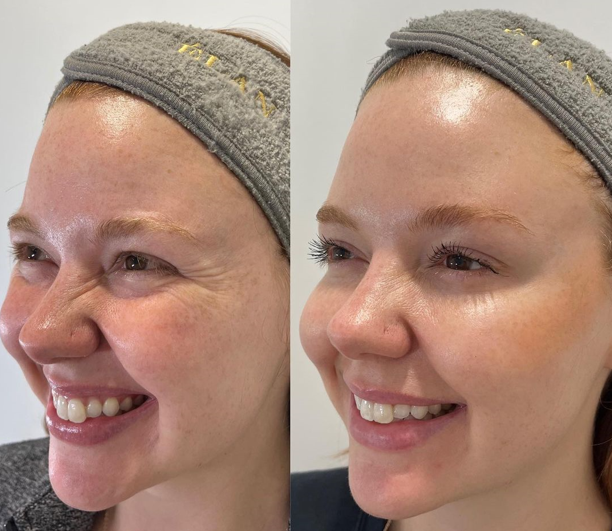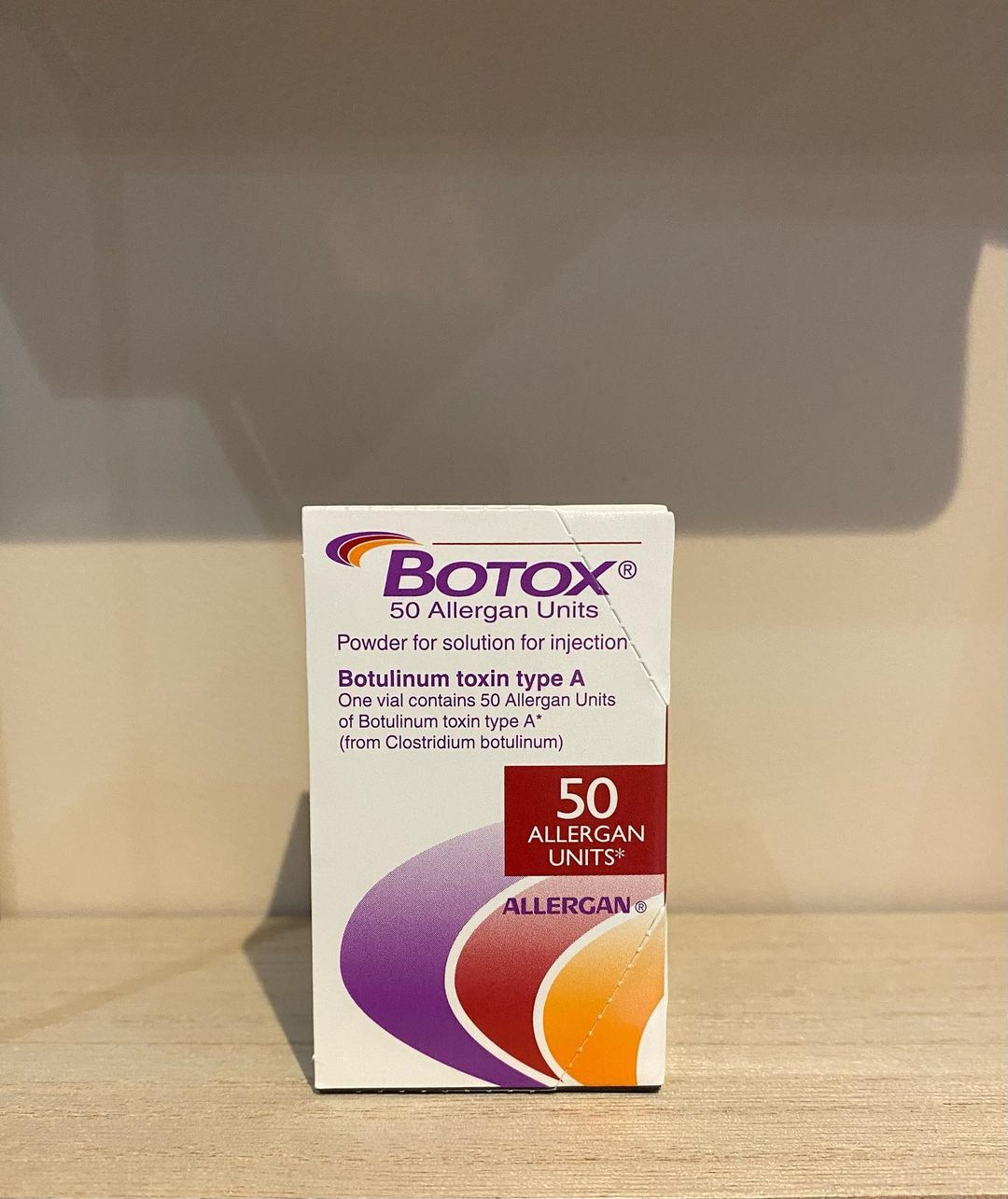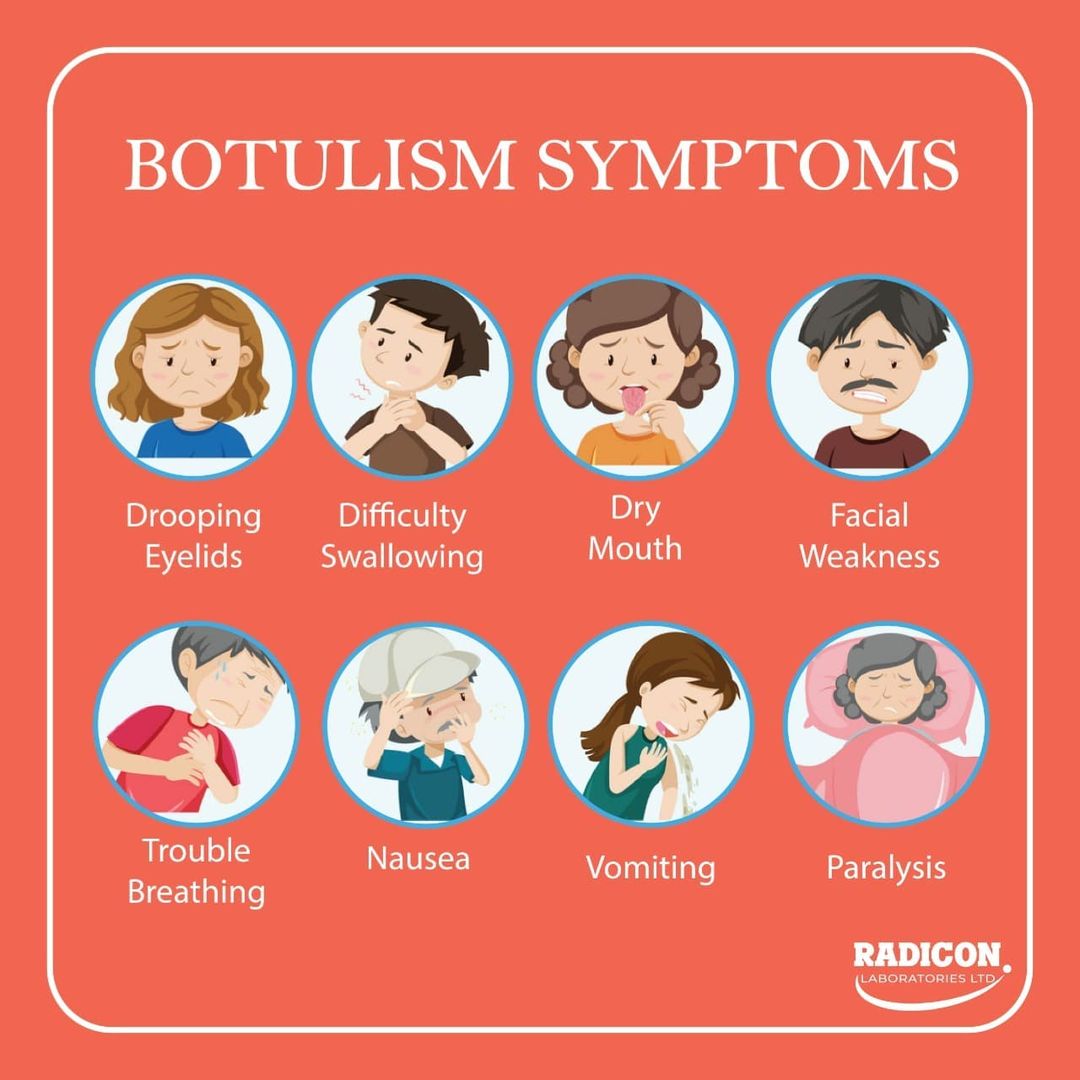Botulinum Toxin: The “Miracle Poison” You Might Take One Day
If you happen to read this blog post published just this month in a popular food blog, the “deadliest thing” it’s talking about is botulinum toxin. In his The Angry Chef blog, development chef and food and science writer Anthony Warner put a spotlight on botulinum toxin.
Author:Rhyley CarneyReviewer:Paula M. GrahamNov 26, 2021102.8K Shares1.8M Views
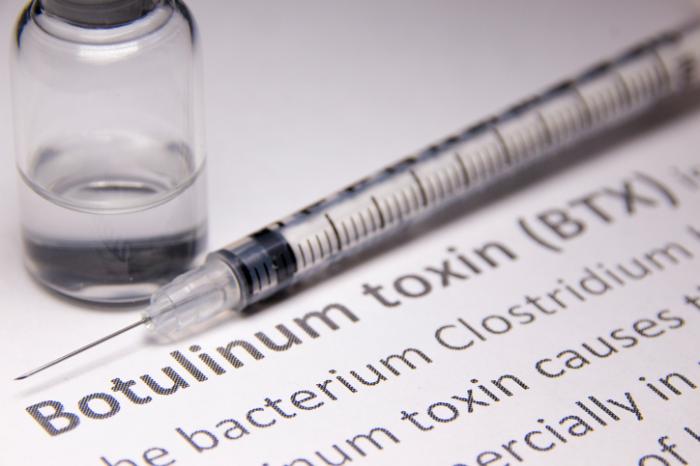
If you happen to read this blog post published just this month in a popular food blog, the “deadliest thing” it’s talking about is botulinum toxin.
Guess what’s the lone picture that accompanies the article?
A single piece of hot dog (or wiener, if you’re from Europe).
Hard to see the connection?
In his The Angry Chef blog, development chef and food and science writer Anthony Warner put a spotlight on botulinum toxin.
Warner marveled how this particular toxin has affected and influenced the world’s food system and has created multibillion-dollar businesses over the years. He also mentioned how the same toxin can kill individuals and – if terrorists will get their hands on them AND find out how to use them for their killing spree – mankind.
If you try saying “botulinum toxin” fast, you might hear a very familiar word.
“Botox,” you say?
Read on and get to know how botulinum toxin can either poison you or make a miracle for you (or both or not all).
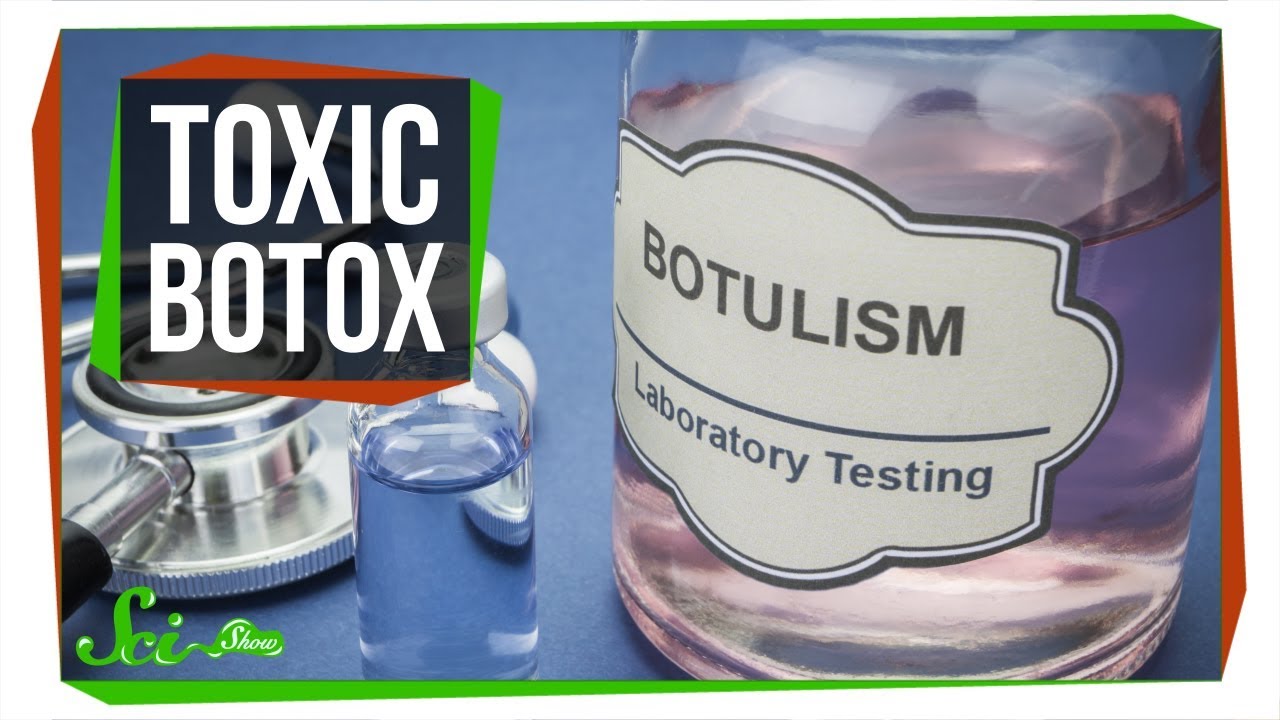
Using One of the Deadliest Neurotoxins for Beauty... and Medicine?
The Tales Of The Killer Hotdogs And The Killer Ham
Yes, yes, processed foods, when consumed consistently in large quantities over a period of time, as warned by various health professionals, can cause one’s death.
But there were killer hot dogs – killer sausages, sorry – that took several lives in Wuttermberg, Germany, between the late 1790s and early 1800s, according to Discover Magazine.
German physician and poet Justinus Andreas Christian Kerner (1786-1862) speculated that food poisoning – as caused by “sausage poison,” the term he came up with – triggered the deaths.
There were approximately 155 cases of that disturbing “sausage poisoning,” added Discover Magazine.
In one incident alone, six people died among the 13 people who partook of the same sausage, according to a 2016 article published by the International Journal of Dermatology.
Kerner’s “sausage poison” is now the neurotoxin known as botulinum toxin, and the kind of food poisoning brought by the “sausage poison” is now the illness called botulism.
In Latin, “botulus” means “sausage.”
As for the killer ham, the incident happened in Belgium on December 14, 1895, according to the Belgian Society for Microbiology (BSM).
After a performance, the 34-member brass band Fanfare Royale Les Amis Réunis ate at Le Rustic, a pub in the village of Ellezelles in Ronse. Most of them ate smoked ham, and the next day, most of them fell ill.
Interestingly, those who didn’t eat the ham didn’t get sick.
Alarmingly, within the span of five to seven days, three of those who ate died. All three were “aged between 15 and 21,” said BSM.
This time, it’s a Belgian microbiologist by the name of Emile Pierre-Marie Van Ermengem (1851-1932) who solved the puzzle of the said food poisoning incident.
After studying the reports by Kerner, Van Ermengem discovered the bacteria Bacillus botulinus, which contaminated the ham and caused the food poisoning.
At present, Bacillus botulinus is called Clostridium botulinum.
What’s Today’s Science And Specialists Say
First things first: the compound word “neurotoxin” is the combination of “neuro” (means “nerve and nervous system,” according to London-based Brain & Spine Foundation) and “toxin” (“any substance poisonous to an organism,” according to Britannica).
So, a neurotoxin is a substance harmful to humans, animals, and other living things. Such a substance, tells Britannica, can be found in cocaine and heroin, pesticides, and from the venom of a snake, just to name a few.
How harmful are neurotoxins?
Neurotoxins can damage – even completely destroy – the neurons and tissues of the nervous system: the brain, the nerves, and the spinal cord. Among its many functions, neurons, aka nerve cells – acting like a lieutenant to his platoon – command the muscles to move, says Dr. Alan Woodruff from the Queensland Brain Institute.
Imagine if the “commander” (the nerve cells) gets “sick” (damaged) or, worse, “die” (destroyed). What will be its immediate and long-term effects on muscle movement? Mobility is just one concern, however. Damaged nerve cells lead to several other problems.
In a make-believe “Most Fatal” contest held for neurotoxins, the trophy will go straight to clostridial neurotoxins, “the most toxic” of them all, according to The Comprehensive Sourcebook of Bacterial Protein Toxins (2006, 3rd ed.).
The bacteria Clostridium botulinum and Clostridium tetani produce clostridial neurotoxins, which include botulinum neurotoxins (BoNTs) or botulinum toxin and tetanus neurotoxin (TeNT).
In their respective scholarly papers, veterinary pathologist Dr. Luca Bano and computational biologist Andrew C. Doxey and biologist Michael J. Mansfield (co-authors) described BoNTs and TeNT as “the most potent” among all toxins known. Several other academic papers agree with them.
How potent – or lethal?
According to Britannica, if someone inhales botulinum toxin – just less than 1 microgram, take note – that person could die.
Moreover, do you know how much amount of clostridial neurotoxins will it take to kill 50% of a given population?
Neurologist R. Douglas Fields, in his 1998 paper (whatever he wrote still rings true today, by the way) for the academic journal The Neuroscientist, mentioned an exact amount:
“0.1 ng/kg” (0.1 nanogram per kilogram).
Know that 1 microgram is nearly invisible to the naked eye, and 0.001 microgram is equivalent to 1 nanogram.
The California Metals Coalition gives us an idea on how small in size is 1 nanogram:
Get a grain of rice. Slice it into 25 million parts. Now from those 25 million parts of a single grain of rice, take one part. Its weight? One nanogram.
Again, Fields said: “0.1 ng/kg.”
Just that teeny-weeny amount could wipe away hundreds of thousands of lives.
“The most potent” toxin indeed.
That’s what chef Warner said that appeals to terrorists because they might consider using it as a biological weapon for their future biological attacks or bioterrorism plans.
Dangerous Yet Useful?

A good follow-up question might be: “How come?”
Frank J. Lebeda and Mark A. Poli from the U.S. Army Medical Research Institute of Infectious Diseases said that medical science benefits from botulinum toxin and tetanus neurotoxin.
When medical science benefits from something, humanity shall benefit from it, too, right?
Despite their being “highly dangerous,” Lebeda and Poli still declared in their 2002 paper included in the Handbook of Neurotoxicology that these neurotoxins are “quite useful.”
One study published by the U.S. National Center for Biotechnology Information in 2016 mentioned how botulinum toxin type A could be used for urinary tract (bladder, kidneys) problems, eye disorders, and stomach problems. Same for bone and muscle-related complications (e.g., sports injuries, spinal problems).
On a diet? Botulinum toxin type A is also used to treat obesity.
Wrinkles and sagging cheeks? Get Botox injections.
The Three B’s – Botulinum Toxin, Botulism, Botox
Beware of these three B’s: botulinum toxin, botulism – a kind of illness, which could be fatal – and Botox.
However, when it comes to Botox, vanity could make you change your mind (and spend a lot, too). Go ask Brad Pitt’s ‘90s real-life girlfriend and, a decade after, Robert Downey Jr.’s screen love interest.
No, not Angelina Jolie (she never starred in “Iron Man”); nevertheless, The Sun reported only last October about speculations of her having Botox.
Botulinum Toxin And Botulism
Botulinum toxin causes botulism, where the affected person experiences muscle paralysis and finds it hard to breathe, according to the U.S. Centers for Disease Control and Prevention (CDC).
CDC describes botulism as “rare but serious” because it can lead to death.
In addition, CDC warns that botulinum toxin could be present in foods that were poorly or incorrectly preserved, home canned, or fermented.
CDC identified the following as types of botulism:
Adult Intestinal Toxemia/Colonization(or Adult Infectious Botulism, per World Health Organization)
People with gut problems tend to have higher chances of getting it. The bacterial spores will go to the intestines, where it will create the botulinum toxin.
The instance of having this is “very rare,” said CDC, and there’s no clear explanation yet as to how one gets infected.
Foodborne Botulism
Botulinum toxin can contaminate food, particularly home cooked meals; so, always prepare all foods properly.
Shellfish – clams, mussels, oysters – can be contaminated with neurotoxins.
Iatrogenic Botulism(or Inadvertent, per WHO)
This means having an excessive amount of injected botulinum toxin in one’s system.
In other words: too much Botox.
Infant Botulism
Parents, if bacterial spores – they make botulinum toxin – reach the intestines of your bundle of joy, there will be no joy for you and your baby. Botulinum toxin can thrive there.
Honey is the main culprit, according to The Medical News. Never give honey to infants and babies. Wait until your child reaches one year old before he/she can have a taste of honey.
Wound Botulism
A wound can serve as an entry point for bacterial spores. People who underwent surgery or figured in a vehicular accident get a higher chance of having wound botulism.
The use of illegal injection drugs (e.g., cocaine, ecstasy, heroin) can also make someone highly prone to it. In 2003 and 2004, cases of wound botulism among injection drug users in the U.K. soared, according to a research article published by the Journal of Clinical Microbiology in 2020.
Botox

The Hollywood celebrity being referred to earlier is Gwyneth Paltrow.
At one point during her 2013 Harper’s Bazaar interview one freezing day in London, a then-40-year-old Paltrow said, “I won't do Botox again.”
So, the Oscar-winning actress indirectly admitted she once got swayed to get Botox injections. At what age? Hard to tell.
Botox – always in uppercase because it’s a registered trademark of Allergan, Inc. – is simply botulinum toxin type A, one of the seven types of botulinum toxin. In the U.S., it’s “the first commercially available type,” according to an academic paper published by the Indian Journal of Dermatology in 2010.
In 2020, Gwyneth Paltrow, at 47, started receiving injections again of botulinum toxin type A, albeit the one that goes by the commercial name Xeomin, reported FiercePharma. Paltrow even signed a contract to be Xeomin’s global spokesperson.
The aforementioned academic paper said that per clinical studies, the U.K.-licensed Xeomin has the same effects as Botox.
Another European brand using botulinum toxin type A to achieve that Botox-kind-of-effect, according to the paper, is Dysport. As for the brands Myobloc and Neurobloc, they use botulinum toxin type B.
The Guardian reported that biopharmaceutical company AbbVie (est. 2013) in Illinois purchased in 2019 the Botox-making American pharmaceutical company Allergan (est. 1950) for a staggering $63 billion.
Why spend a staggering amount of money if the market is small, right?
It’s The “Miracle Poison” After All
Thus said P. K. Nigam and Anjana Nigam, the authors of the paper published by the Indian Journal of Dermatology, about botulinum toxin.
After knowing the chilling possibilities of getting botulism – where you could end up dead! – one couldn’t help but be perplexed that botulinum toxin is also being injected on humans.
Ah! The wonders of science – and the amazing jobs scientists and health and food professionals do daily!
Food will always be a necessity and vanity will always hound humans, with science accompanying us all in the journey.
So, as people around the world eat and check themselves out in the mirror once in a while, botulinum toxin quietly works on the sidelines: making someone sick, improving someone’s health, or smoothing someone’s wrinkles.

Rhyley Carney
Author

Paula M. Graham
Reviewer
Latest Articles
Popular Articles



